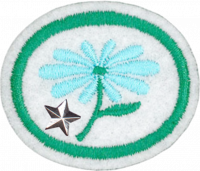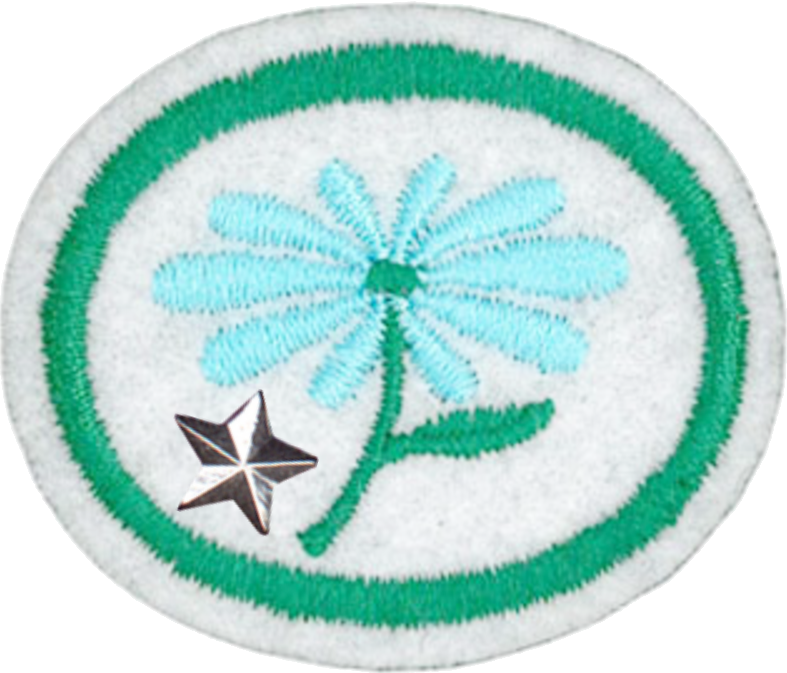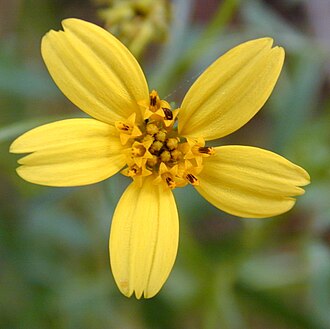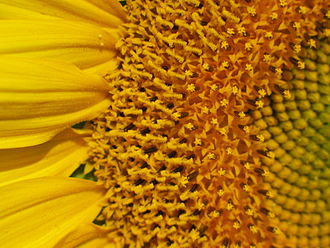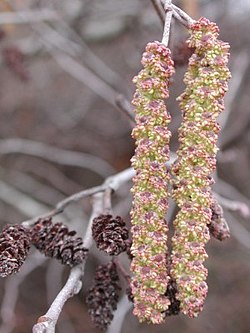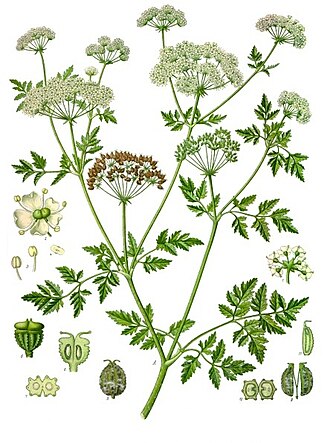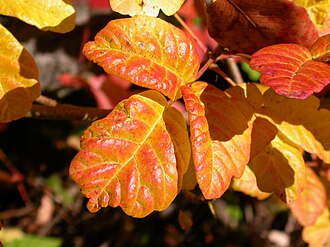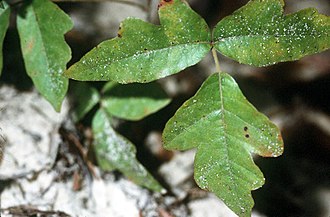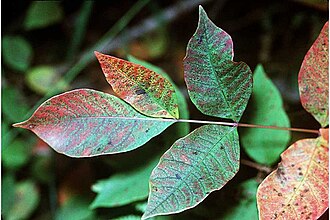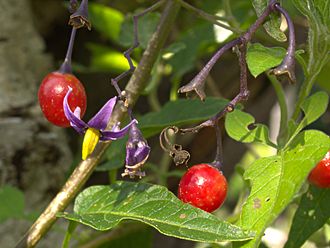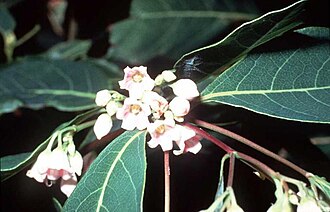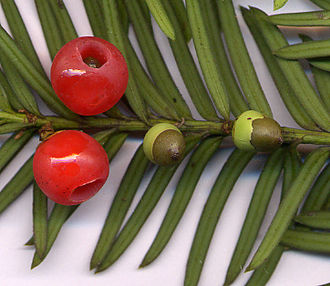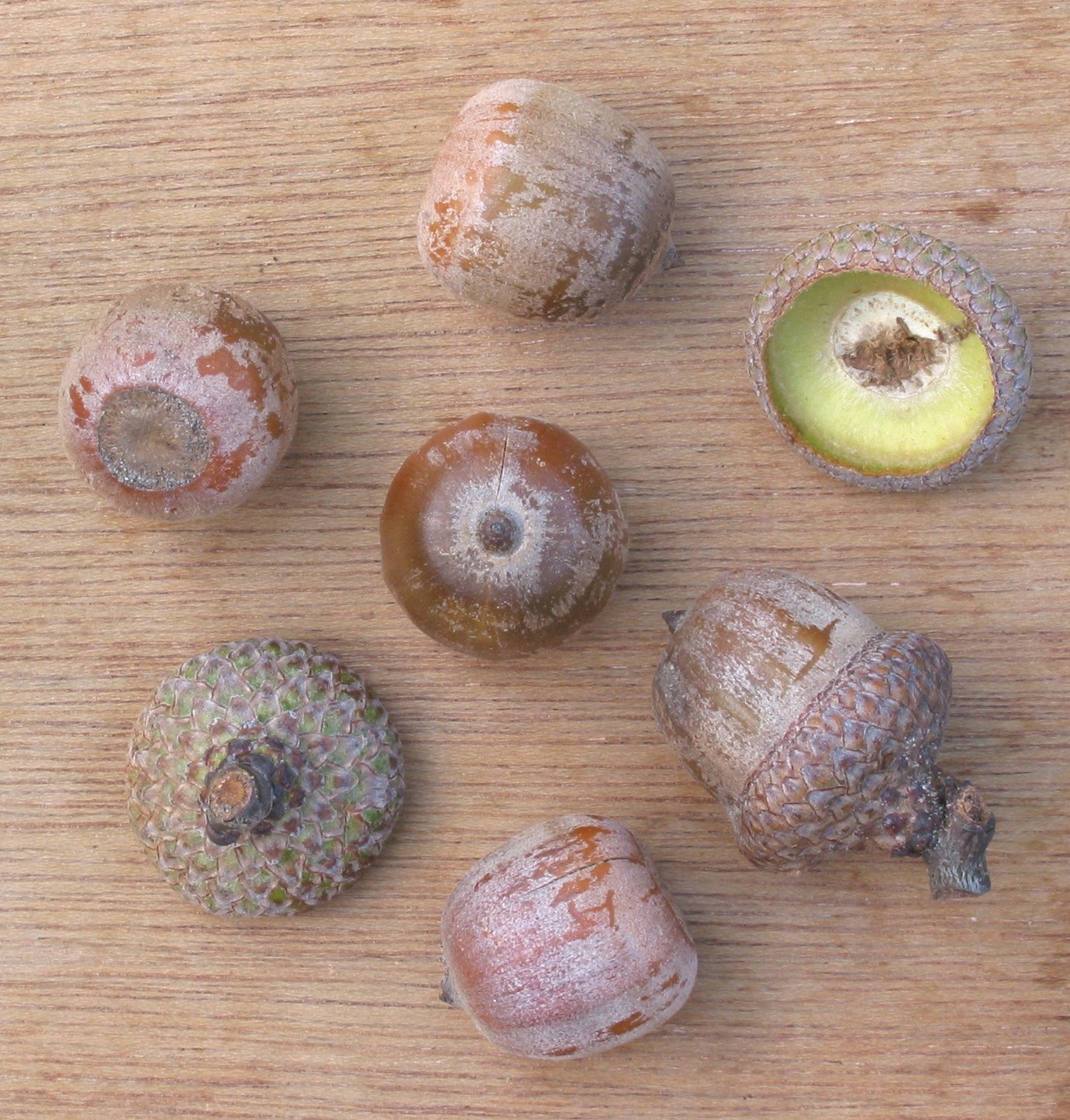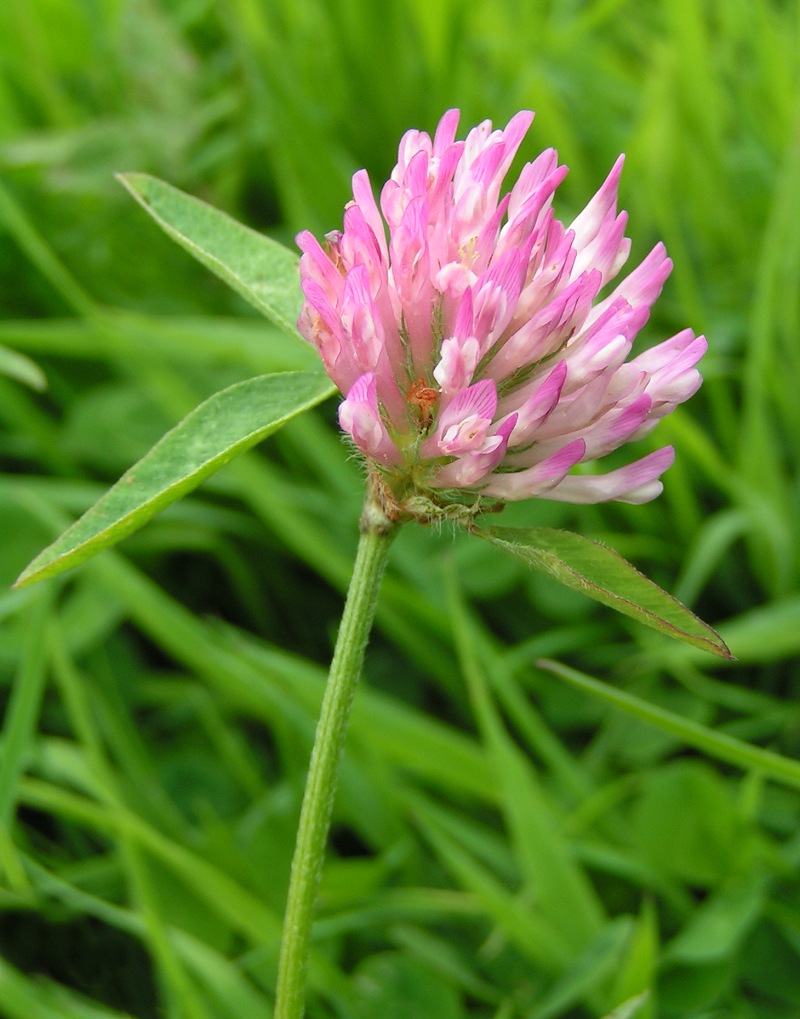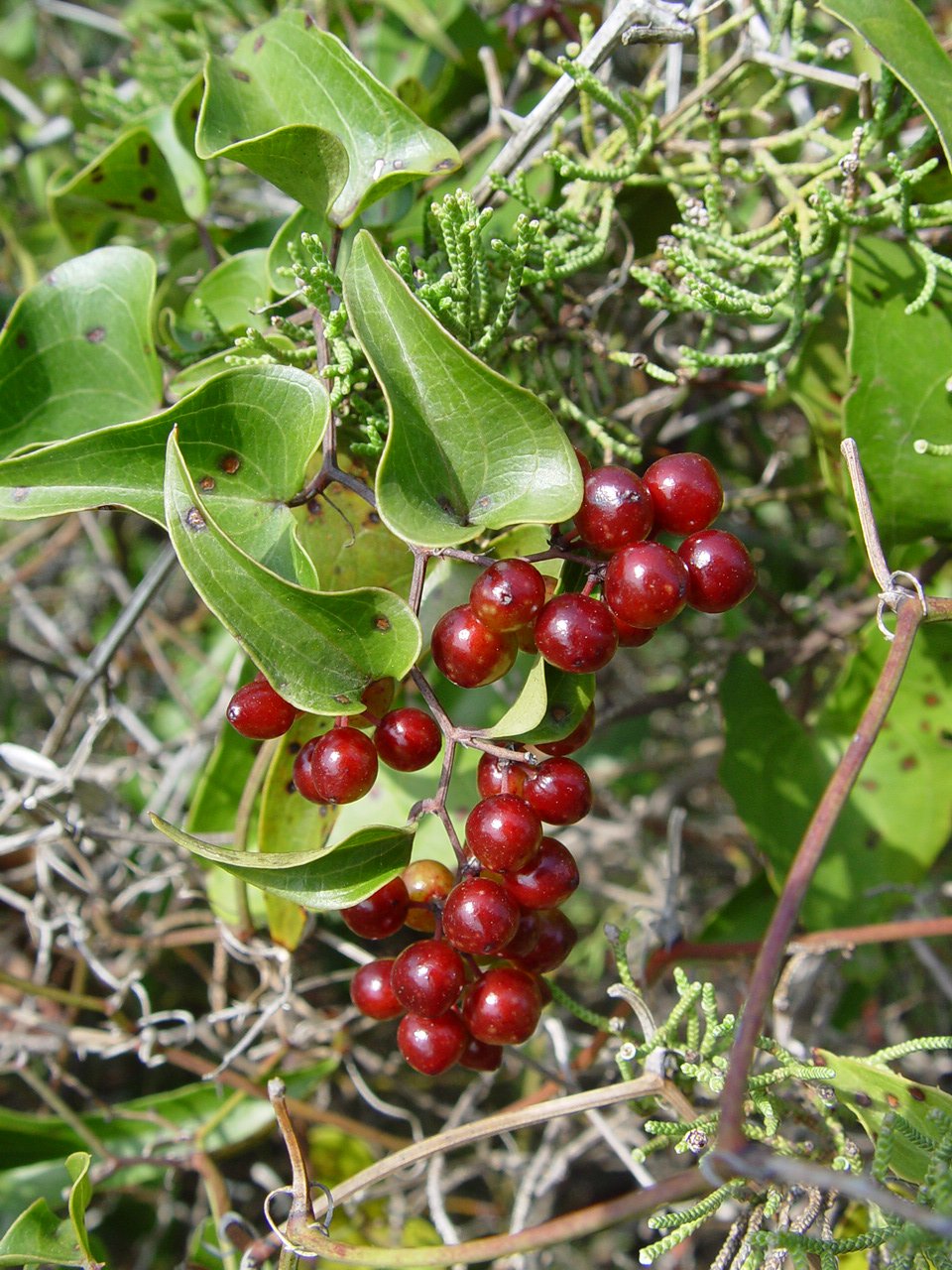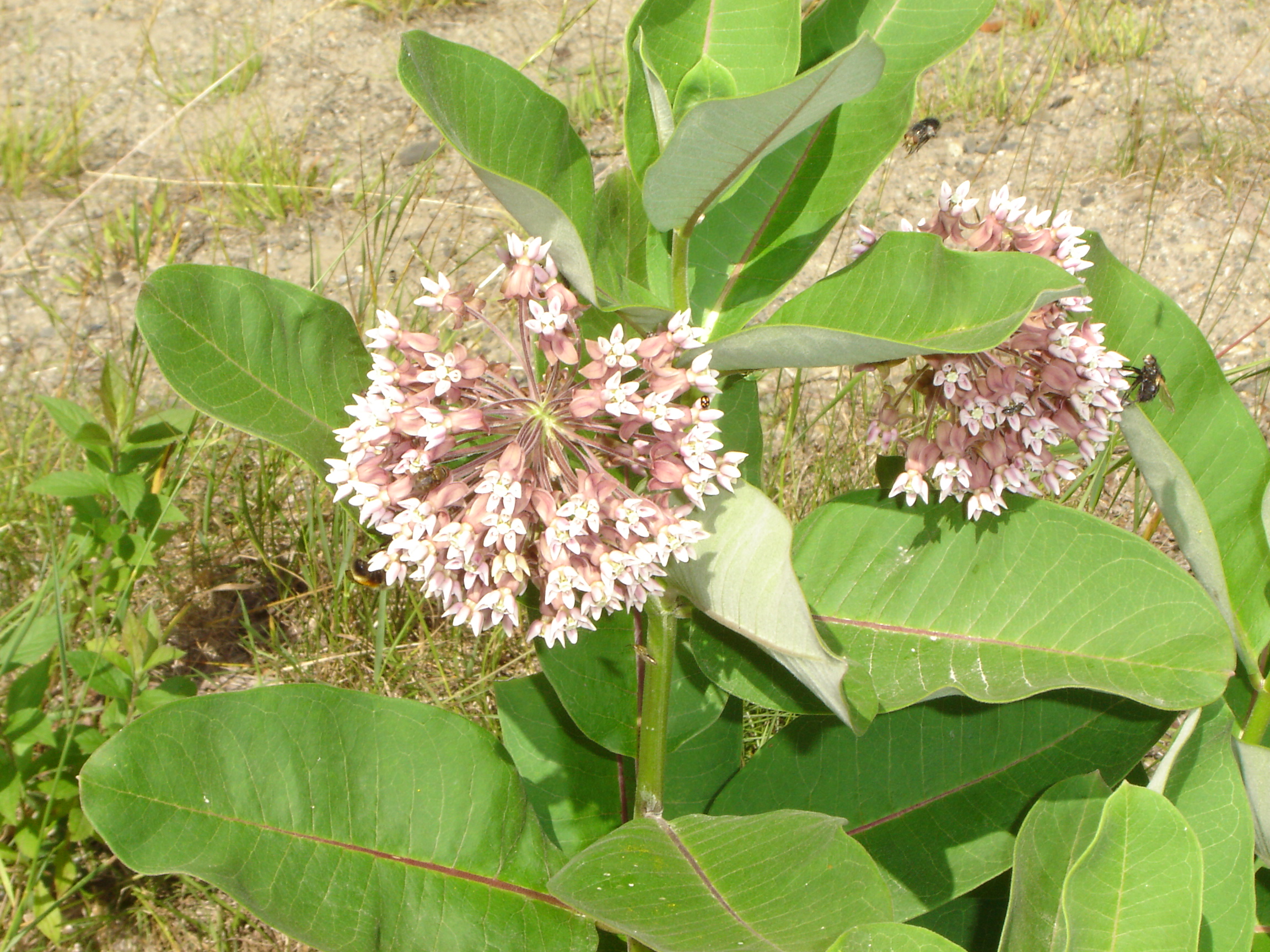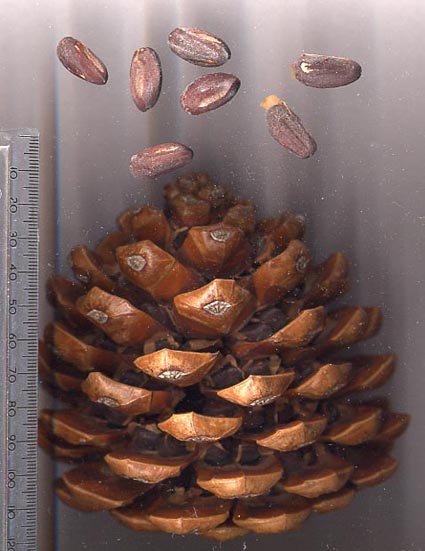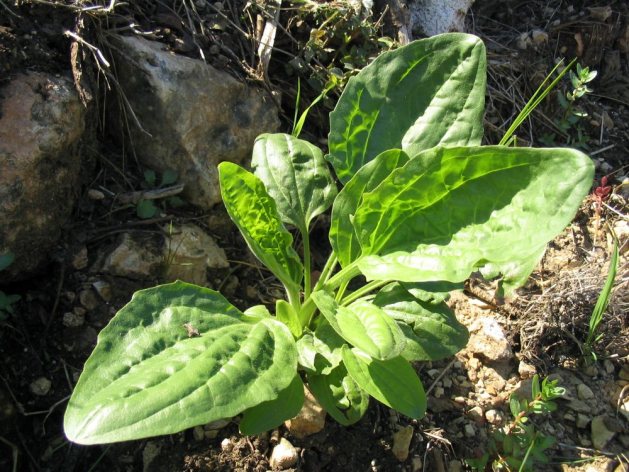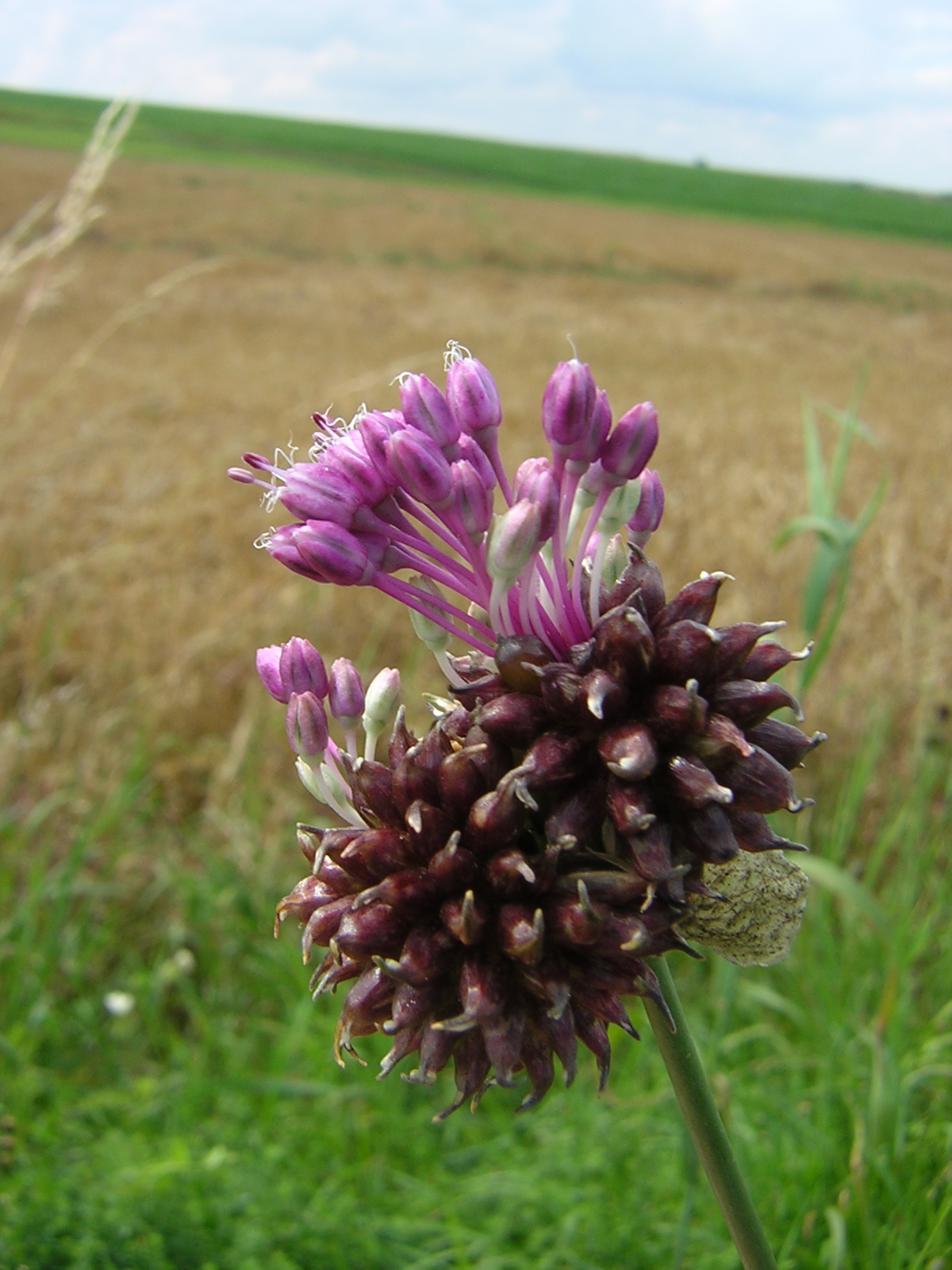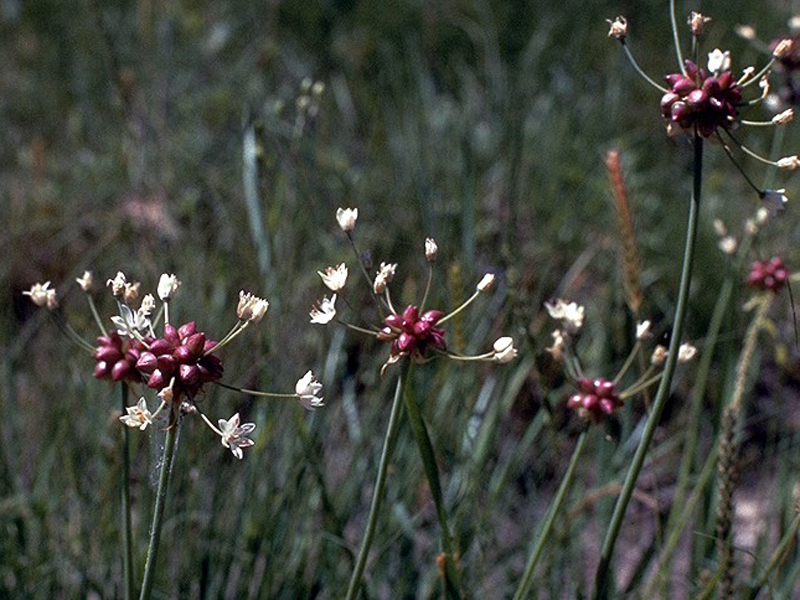Difference between revisions of "AY Honors/Flowers - Advanced/Answer Key"
m |
m (- Category of AYHAB) |
||
| (4 intermediate revisions by the same user not shown) | |||
| Line 4: | Line 4: | ||
<noinclude><translate><!--T:44--> | <noinclude><translate><!--T:44--> | ||
</noinclude> | </noinclude> | ||
| − | <!-- 1. Have the Flower | + | <!-- 1. Have the Flower honor. --> |
| − | {{honor_prerequisite | + | {{honor_prerequisite|honor=Flowers}} |
<noinclude></translate></noinclude> | <noinclude></translate></noinclude> | ||
{{CloseReq}} <!-- 1 --> | {{CloseReq}} <!-- 1 --> | ||
| Line 33: | Line 33: | ||
</noinclude> | </noinclude> | ||
<!-- 3. Give the distinguishing characteristics of the flowers of each of the 12 common plant families. --> | <!-- 3. Give the distinguishing characteristics of the flowers of each of the 12 common plant families. --> | ||
| − | {{: | + | {{:AY Honors/Flower families}} |
<!--T:48--> | <!--T:48--> | ||
| Line 241: | Line 241: | ||
<noinclude><translate><!--T:60--> | <noinclude><translate><!--T:60--> | ||
</noinclude> | </noinclude> | ||
| − | {{: | + | {{:AY Honors/Camping/Ten edible wild plants}} |
<!--T:61--> | <!--T:61--> | ||
| Line 249: | Line 249: | ||
<noinclude><translate><!--T:62--> | <noinclude><translate><!--T:62--> | ||
</noinclude> | </noinclude> | ||
| − | We restate the requirements here for your convenience, but for instruction, we ask you to go to the entry on the [[ | + | We restate the requirements here for your convenience, but for instruction, we ask you to go to the entry on the [[AY Honors/Flowers|Flowers]] honor. |
<!--T:40--> | <!--T:40--> | ||
| Line 269: | Line 269: | ||
<noinclude><translate></noinclude> | <noinclude><translate></noinclude> | ||
== References == <!--T:41--> | == References == <!--T:41--> | ||
| − | |||
<noinclude></translate></noinclude> | <noinclude></translate></noinclude> | ||
{{CloseHonorPage}} | {{CloseHonorPage}} | ||
Latest revision as of 18:21, 14 July 2022
1
For tips and instruction see Flowers.
2
Rather than finding a specimen and comparing it to thousands of pictures in a Field Guide, the candidate for the Flowers - Advanced honor will need a more systematic approach to field identification if there is ever to be any hope in finding 75 species. The most important tool to the budding botanist is a key, which is a series of questions, the answers to which are mutually exclusive, and lead to another set of questions. See requirement 4 for more details on using a key.
Once the Pathfinder has a key in hand, it is time to set out in search of wildflowers. The important thing to remember here is that the term wildflowers covers a lot of different plants, not just the ones with showy blossoms. Many flowering plants bloom for only a short time, and luckily, the blossom (though useful) is not the only indicator of its identity. Wildflowers in the context of this honor are any flowering plants that are neither trees nor grass. This excludes ferns (which do not flower) and mushrooms (which are not plants, but rather, are fungi). This definition does include what most people would call "weeds".
In addition to having a good key, the Pathfinder will also need a camera or a sketch pad. Note that this honor does not require the collection of the plants themselves. In fact, this practice is strongly discouraged, as a troop of Pathfinders in search of wildflowers can quickly eliminate them from a heretofore thriving habitat. If the Pathfinder opts to use a camera, remember that there is no requirement for the photographs to be professional-grade prize-winning entries in an international competition.
Even if the Pathfinder is not a good artist, there is still much value in attempting to sketch a plant. Sketching requires attention to the details, and as the Pathfinder spends time recording these details in the form of a sketch, the information will work its way into the memory. Afterwards, the Pathfinder will be able to look at the sketch - however badly drawn it may be - and recall a vivid image of the plant as it really was.
In spite of this, we still recommend that a good key be taken along in the field and that the Pathfinder attempt to identify the plant while there. Otherwise, the key may ask a question that cannot be answered by looking at the sketches (or even photographs) and the Pathfinder will have no recourse other than to return to the field to gather the required information, or give up on identifying that specimen.
3
Orchid
The Orchid family is the largest family of flowering plants, containing some 25,000 species. Orchids, like the grasses and the palms, which they resemble in some ways—for instance the form of their leaves—are monocotyledons. They have one cotyledon, or embryonic leaf, in contrast to the two of most flowering plants. Orchids have simple leaves with parallel veins. Their shape is highly variable between species.
- Vanilla
- Lady's Slipper
- Orchid
Lily
Plants in this family have linear leaves, mostly with parallel veins, and flower parts in threes.
- Turk's Cap Lily
- Wild Garlic
- Onion
- Trillium
- Fawn Lily
- Tulip
- Hyacinth
Mustard
The family was formerly named Cruciferae ("cross-bearing"), because the four petals of their flowers are reminiscent of crosses.
- Cabbage
- Broccoli
- Cauliflower
- Brussels sprouts
- Mustard
- Horseradish
- Watercress
Pink
The leaves are almost always opposite, rarely whorled. The blades are entire, petiolate and often stipulate. These stipules are not sheathforming. The flowers are regular and mostly have 5-way symmetry, i.e. with 5 petals and 5 sepals, but sometimes with 4 petals. The sepals are free from one another or united. The petals are fringed or deeply cleft at the end.
- Carnation
- Bladder Campion
- Swamp Milkweed
- Common Milkweed
- Butterfly Plant
- Sand Milkweed
- Whorled Milkweed
- Deptford Pink
Buttercup
Plants in the Buttercup family are mostly herbaceous plants, but with some woody climbers (such as Clematis) and subshrubs (e.g. Xanthorhiza). Leaves are very often more or less palmately compound. The flowers have many free stamens arranged in a spiral and usually many free pistils. Flowers are most often grouped in terminal racemes, panicles or cymes.
- Delphinium
- Columbine
- Marsh Marigold
- Thimbleweed
- Clematis
- Hellbore
- Larkspur
- Buttercup
Cactus
Cacti are distinctive and unusual plants, which are adapted to extremely arid and hot environments, showing a wide range of anatomical and physiological features which conserve water. Their stems have expanded into green succulent structures containing the chlorophyll necessary for life and growth, while the leaves have become the spines for which cacti are so well known.
- Saguaro
- Barrel Cactus
- Prickly Pear
- Rabbit Ear
Rose
Members of the Rose family have 5 sepals and 5 petals which are flat and wavy at the margins. Each flower has at least ten stamens. All members of the rose family have a hypanthium, which is a bowl-shaped part of a flower consisting of the bottoms of the sepals, petals, and stamens stuck together.
- Rose
- Apple
- Blackberry
- Strawberry
- Raspberry
- Apple
- Plum
- Peach
- Cherry
- Pear
Bean
All members of this family have five-petaled flowers in which the superior ovary ripens to form a "pod", technically called a legume, whose two sides split apart, releasing the seeds which are attached to one or both seams. A significant characteristic of legumes is that they host bacteria in their roots, within structures called root nodules. These bacteria have the ability to take nitrogen gas out of the air and convert it to a form of nitrogen that is usable to the host plant. This process is called nitrogen fixation.
- Bean
- Lupins
- Clover
- Alfalfa
- Peas
- Peanuts
- Soybeans
- Lentils
- Mimosa
- Kudzu
Parsley
The parsley family has flower clusters being in the form of a compound "umbel". The small flowers are radially symmetrical with 5 small sepals, 5 petals and 5 stamens.
- Cumin
- Parsley
- Carrot (Queen Anne's Lace)
- Dill
- Caraway
- Fennel
- Angelica
Smartweed
The seeds of the plants belonging to the smartweed family have a triangular shape. Leaves of these plants have a peculiar pair of sheathing stipules known as ocreae.
- Buckwheat
- Sorrel
- Rhubarb
- Knotgrass
Bellflower
The Bellflower family consists mostly of herbs, shrubs, and more rarely small trees, which usually have milky non-toxic sap. Leaves of these species are often alternate, more rarely opposite. They are also simple and without stipules. Flowers are bisexual, bell-shape, consisting of a narrow tube-like corolla with small spreading lobes. Flowers are fairly often blue. Fruits are often berries, but can also be capsules.
- Bluebell
- Harebell
- Lobelia
- Balloonflower
Mint
The flowers in the Mint family typically have petals fused into an upper lip and a lower lip. The leaves emerge oppositely, each pair at right angles to the previous one or whorled. The stems are frequently square in cross section, but this is not found in all members of the family, and is sometimes found in other plant families. The flowers are bilaterally symmetrical with 5 united petals, 5 united sepals. They are usually bisexual and have a flower cluster that looks like a whorl of flowers but actually consists of two crowded clusters.
- Basil
- Mint
- Rosemary
- Sage
- Savory
- Marjoram
- Oregano
- Thyme
- Lavender
- Perilla
- Self-heal
Aster (Daisy)
Plants in the Aster family typically have one or both of two kinds of florets. The outer perimeter of a flower head like that of a sunflower is composed of florets possessing a long strap-like petal, termed a ligule; these are the ray florets. The inner portion of the flower head (or disc) is composed of small flowers with tubular corollas; these are the disc florets. The composition of asteraceous inflorescences varies from all ray flowers (like dandelions, genus Taraxacum) to all disc flowers (like pineapple weeds).
- Aster
- Common Daisy
- Oxeye Daisy
- Black-eyed Susan
- Lettuce
- Chicory
- Sunflower
- Safflower
- Jerusalem Artichoke
- Goldenrod
- Chrysanthemum
- Dandelion
- Boneset
- Strawflower
- Ragwort
Snapdragon
The plants are annual or perennial herbs with flowers that are zygomorphic (can be divided by only a single plane into two mirror-image halves, much like a person's face), or rarely actinomorphic (can be divided into symmetrical halves by more than one longitudinal plane passing through the axis, much as a pie can be cut into several equal and identical pieces).
- Butterfly Bush
- Figwort
- Foxglove
- Mullein
4
Identification keys - also called dichotomous keys - are a series of questions which when answered correctly and in the sequence given reveal the identity of a plant (or animal, or any pretty much other thing that naturalists have studied in the past three of four hundred years).
The questions are designed such that they offer two (sometimes more) mutually exclusive answers. The answer selected when using a key will lead to a different question (or to the identification of a species). Naturalists have developed various schemes for identifying the next set of questions.
Many keys are replete with technical terms which can be very confusing to the novice and it is very important to understand all the terminology used in the question before choosing an answer. Luckily most keys will also have a glossary, and ideally, illustrations as well. If you come to a term you do not understand, look it up until you do understand. A key is very much like directions to an unfamiliar place, and the questions are like road signs. If you make a wrong turn, you will end up in the wrong place.
Some keys are better than others, and some strive to use less technical jargon. If you have difficulty with a key, try a different one. Another thing that distinguishes a good key from a poor one is the number of "road signs" given at a particular juncture. For instance, the key may ask if the plant's fruit is red or blue, and you happen to be examining a plant when at a time when it does not bear fruit. Alternative questions help in situations like this.
It is best to have the key in hand when you are examining a plant, as it may very well ask a question that cannot be answered without close examination (sometimes with a hand lens, or even with a microscope). Read all the options presented by the question, as sometimes they are only subtly different. Choose the answer that fits best. If none of the answers seem to apply to the plant at hand, you may have previously chosen an incorrect answer. Backtrack and double check. When the last question is answered, and if all the questions were answered correctly, then the species will be successfully identified. Good keys will end with a detailed description of the plant. It is important to read this description and compare it to the plant you are keying just to be sure it is the right one.
5
Perfect and Imperfect
The terms perfect and imperfect as pertaining to flowers relates to their sexuality. Flowers are the sexual organs of a plant, and they may contain male (stamens), female (pistils), or both parts. A plant is said to be perfect if it possesses both male and female equivalent parts. If a flower has only male, or only female structures, it is said to be imperfect.
Pistillate and Staminate
A flower is pistillate if it possesses only pistils, which are a plant's female reproductive structures. If it possesses only stamens (the male reproductive structures), it is called staminate.
Monoecious and Dioecious

and reduced, sterile stamens with no pollen
A monoecious plant is one that possesses both male and female unisexual flowers on the same plant; from Greek for "one household". Individuals bearing flowers of both sexes at the same time are called simultaneously monoecious. Individuals that bear only flowers of a single sex at one time are called consecutively monoecious. An example of a monoecious plant is the Alder (a shrub).
A dioecious plant is one in which the male and female unisexual flowers occur on different individuals; from Greek for "two households". An example of a dioecious plant is the Holly.
Monocotyledons and Dicotyledons
Dicotyledons, or "dicots", is a name for a group of flowering plants whose seed typically contains two embryonic leaves or cotyledons. Monocotyledons, or "monocots" have a single embryonic leaf.
6
Jesus spoke of the futility of worry:
- Matthew 6:28-30
- "And why do you worry about clothes? See how the lilies of the field grow. They do not labor or spin. 29Yet I tell you that not even Solomon in all his splendor was dressed like one of these. 30If that is how God clothes the grass of the field, which is here today and tomorrow is thrown into the fire, will he not much more clothe you, O you of little faith? - NIV
The Lord caused Aaron's staff to blossom to show that He had set him up as the high priest.
- Exodus 17:8
- The next day Moses entered the Tent of the Testimony and saw that Aaron's staff, which represented the house of Levi, had not only sprouted but had budded, blossomed and produced almonds. - NIV
7
Poison Hemlock
Poison Ivy
Western Poison Oak
Atlantic Poison Oak
Poison Sumac
Bitter Nightshade
Dogbane
Yew
8
8a
Some of these plants may seem familiar as they were also listed in the previous requirement in the "poisonous plant" category. It is curious, though it should not be surprising, that medicinal plants are also considered poisonous. This would be a good opportunity to talk to your Pathfinders about drug abuse.
Any medicine, if taken incorrectly, can poison the body, and that is why it is important to never take medicines unless there is a need for them, and then it is vital to follow the doctor's instructions (or the instructions on the package for over-the-counter medicines). Note that medicinal herbs found in the wild do not come with instructions! We highly recommend that you stress to your Pathfinders that they should never attempt to medicate themselves or others using these plants, as it can be very dangerous or even fatal!
Poison Hemlock
Poison hemlock has been used as a sedative and for its antispasmodic properties. It was also used by Greek and Persian physicians for a variety of problems, such as arthritis. However, it wasn't always effective as the difference between a therapeutic and a toxic amount is very slight. Overdoses can produce paralysis and loss of speech being followed by depression of the respiratory function and then death.
Poison Ivy
Extremely dilute forms of poison ivy are used in homeopathic medicine, most often as a remedy for musculoskeletal complaints with progressive stiffness that worsens with cold, wet, or inactivity and improves with motion, warmth, and use. The patient may have a red tip of the tongue or a red triangle on the tongue, herpetic outbreaks, and itchiness that improves with very hot water.
Bittersweet
Bittersweet is used in homeopathy and herbalism. Its main usage is for conditions that have an impact on the skin, mucous membrane and the membrane (synovial membrane) around the joints. Bittersweet is considered by some to be a herbal remedy for treating herpes and allergies.
Dogbane
Dogbane was used in herbal medicine to treat syphilis, rheumatism, intestinal worms, fever, asthma, and dysentery. Although the toxins from the plant can cause nausea and catharsis, it has also been used for slowing the pulse.
Pacific Yew
The Pacific Yew Taxus brevifolia, native to the Pacific Northwest of North America, and Canada Yew Taxus canadensis are the sources of paclitaxel, a chemotherapeutic drug used in breast and lung cancer treatment and, more recently, in the production of the Taxus drug eluting stent by Boston Scientific.
8b
We present some of the more common edible plants here. For more options see the Edible Wild Plants honor in the Nature chapter of this book. Incidentally, once you have met this requirement, you will be well on your way to earning the Edible Wild Plants Honor.
Acorn
Description: Acorns are the fruit of the oak tree. They are a very important food source for wildlife. Creatures that make acorns an important part of their diet include birds such as jays, pigeons, some ducks and several species of woodpeckers. Small mammals that feed on acorns include mice, squirrels and several other rodents. Large mammals such as pigs, bears and deer also consume large amounts of acorns; they may constitute up to 25% of the diet of deer in the autumn. However, acorns are toxic to some other animals, such as horses. In some human cultures, acorns once constituted a dietary staple, though they are now generally only a very minor food.
Where found: The oak is native to the northern hemisphere and includes deciduous and evergreen species extending from cold latitudes to tropical Asia and the Americas.
Availability: Fall
Use: The acorn contains tannin, which is very bitter and slightly toxic. Luckily, tannin is easily removed by soaking in water. Acorns from the white oak family have far less tannin than acorns from the black (or red) oak family, so if you have a choice, opt for white oaks. The first acorns to fall from the tree are likely to contain worms and moth larvae. Most of these bad acorns will float in water, while most good acorns will sink. At the beginning of acorn season (late summer or early autumn) you will find that most of the acorns will float and very few will sink. As the season progresses, you will find that most acorns will sink, and few will float. Once you have sorted them, shell them. They can be opened with a pair of pliers or a nutcracker. Remove the meat from the shell, crush it into a fine powder (use a mortar & pestle or a food processor), and then soak it in water for about a week, changing the water twice a day. If you choose to, you can speed this process by boiling the shelled, crushed acorns in several changes of water. Native Americans would put the crushed acorns in a sack and then place the sack in a swift stream for several days. If after soaking, the acorn mush is still bitter, it needs to soak longer. When they are no longer bitter, spread them out on a cookie sheet and dry them in an oven at 120°C![]() for 90 minutes. They can be used as flour or to make acorn mush - a staple of the Native American diet. You can also skip crushing them and eat them as nuts, but uncrushed acorns will take much longer to leach.
for 90 minutes. They can be used as flour or to make acorn mush - a staple of the Native American diet. You can also skip crushing them and eat them as nuts, but uncrushed acorns will take much longer to leach.
Blackberry
Description: The blackberry is a widespread and well-known shrub; commonly called a bramble in the eastern U.S. and Europe but a caneberry in the western U.S. growing to 3 m (10 ft) and producing a soft-bodied fruit popular for use in desserts, jams, and seedless jellies.
Where found: Throughout the non-polar regions of the world.
Availability: Fall
Use: The berries are fantastic eaten straight from the cane, cooked into jelly, or baked into pies.
Typha latifolia -Cattail
Where found: in wetlands throughout the Northern Hemisphere
Availability: Winter, Spring, Summer, Fall
Use: In early spring, the shoots and stalks can be pulled up and eaten raw or boiled for 15 minutes. In late spring, the spikes can be gathered just before they break out of their papery sheaths, boiled for a few minutes, buttered, and eaten like corn-on-the-cob. In early summer, the spikes produce large quantities of pollen which can be gathered by covering the top of the plant with a paper bag, inverting it, and shaking vigorously. The pollen can be used as flour when mixed half and half with wheat flour. In fall and winter, the roots can be gathered. Wash them and then soak them in a bucket of water. While still submerged, crush them to remove the fibrous covering. Then let the starchy portion of the root settle to the bottom. Skim off the fiber, strain out the water, and use as flour.
Chicory
Description: Chicory is a spindly plant with purple (though sometimes pink or white) flowers. The petals are narrow, notched at the tips, and numerous. The flowers fold up in the afternoon, opening again in the morning.
Where found: Originating from Europe, it was naturalized in North America, where it has become a widespread roadside weed.
Availability: Early spring (leaves), Fall to Spring (roots)
Use: The roots are washed, roasted, ground, and brewed as a coffee substitute (use 1.5 tsp per cup of water). In the spring the white, underground portion of the leaves are an excellent addition to salads, and the green above-ground portions can be boiled and eaten as greens.
Clover
Where found: Found worldwide in fields and yards
Availability: Spring, Summer, Fall
Use: The flowers can be eaten raw, added to salads, boiled in soups, or dried (or roasted) and ground to flour. They can also be used to make fritters. Red clover is shown here, but white clover is just as good (but a little smaller, so it takes more work to collect). The leaves and stems are also edible in salads or as greens.
Dandelion
Where found: Throughout Asia, Europe, and North America
Availability: Spring, Summer, Fall
Use: Add the young, tender leaves to salad raw, or boil and eat as greens. The roots can be roasted and ground and used as a coffee substitute. The yellow rays of the flowers are sweet and make a great snack raw, or they can be fried as fritters. The unopened buds are also excellent and can be used the same way as the leaves.
Day Lily
Description: The alternating lanceolate leaves are grouped into fans (a clump also containing the roots and the crown). The crown of a day lily is the small white portion of the stem, between the leaves and the roots. The name "day lily" reflects the fact that the individual flowers last for only one day. The flowers of most species open at sunrise and wither at sunset, to be replaced by another one (sometimes two or none) on the same stem the next day; some species are night-blooming.
Where found: Originally from Eurasia, native from Europe to China, Korea, and Japan, their large showy flowers have made them popular worldwide
Availability: Early Spring (shoots), Summer (buds and flowers), All Year (tubers)
Use: The early shoots make a good addition to a salad. The buds and flowers can be prepared by boiling or be made into fritters. The tubers can also be added to salads or can be prepared like corn-on-the-cob.
Goldenrod
Description: Goldenrods are easily recognized by their golden inflorescence with hundreds of small flower heads. They have slender, usually hairless stems. They can grow to a length between 60 cm and 1.5 m. Their alternate leaves are linear to lanceolate. Their margins are usually finely to sharply serrated.
Where found: Found in the meadows and pastures, along roads, ditches and waste areas in North America and Europe.
Use: The flowers can be steeped in boiling water for 10 minutes to make an anise-flavored tea.
Greenbriar
Description: On their own, Smilax plants will grow as a shrub, forming dense impenetrable thickets. They will also grow over trees and other plants up to 10 m high using its hooked thorns to hang on to and scramble over branches. The genus includes both deciduous and evergreen species. The leaves are heart shaped and vary from 4-30 cm long in different species.
Where found: Eastern United States
Availability: Spring, Summer
Use: The shoots and leaves are delicious eaten raw on the trail or in salads. They can also be boiled and eaten as asparagus and greens.
Milkweed
Description: Common milkweed is a herbaceous perennial plant growing from a rhizome to 1-2 m tall. The stem is very hairy, and all parts of the plants produce a white latex when broken. The leaves are opposite, simple broad ovate-lanceolate, 7-25 cm long and 3-12 cm broad, usually with an undulate margin and a red-colored main vein. They have a very short petiole and a velvety underside. The flowers are grouped in several spherical umbels with numerous flowers in each umbel. The individual flowers are small, 1-2 cm diameter, perfumed, with five cornate hoods. The seeds are attached to long, white flossy hairs and encased in large pods.
Where found: Native to most of North America east of the Rockies, with the exception of the drier parts of the Prairies. It grows in sandy soils and appreciates lots of sunlight.
Availability: Spring, Summer
Use: The stems, shoots, leaves, flowers, and young pods are all edible, but should be cooked first. The flowers can be dipped in batter and fried, and the other parts can be boiled for a few minutes. It is not necessary to boil milkweed in repeated changes of water.
Pine Trees
Description: Pines are evergreen and resinous. The bark of most pines is thick and scaly, but some species have thin, flaking bark. The branches are produced in regular "pseudowhorls", actually a very tight spiral but appearing like a ring of branches arising from the same point. Many pines are uninodal, producing just one such whorl of branches each year, from buds at the tip of the year's new shoot, but others are multinodal, producing two or more whorls of branches per year. The new spring shoots are sometimes called "candles"; they are light-colored and point upward at first, then later darken and spread outward.
Where found: Pines are native to most of the Northern Hemisphere. In North America, they range from the Arctic south to Nicaragua and Hispaniola, with the highest diversity in Mexico and California. In Eurasia, they range from Portugal and Scotland east to the Russian Far East, Japan, and the Philippines, and south to northernmost Africa, the Himalaya and Southeast Asia, with one species (Sumatran Pine) just crossing the Equator in Sumatra. Pines are also extensively planted in many parts of the Southern Hemisphere
Availability: All year
Use: The needles can be eaten year-round. The young shoots can be eaten as candy when stripped of the needles, peeled, boiled until tender, and then simmered for 20-30 minutes in a sugary syrup.
Pine Nuts
Description: Pine nuts are the edible seeds of pine trees. About 20 species of pine produce seeds large enough to be worth harvesting; in other pines the seeds are also edible, but are too small to be of value as a human food. The nuts are located at the base of the scales of the cones.
Where found: Temperate areas of North America, Europe, and Asia.
Availability: Fall
Use: Pine nuts can be eaten raw or baked into a casserole.
Plantago Major, or Broadleaf Plantain
Description: The Broadleaf Plantain or Greater Plantago (Plantago major) is a member of the plantago family, Plantaginaceae. In North America, this plant is primarily a weed, though it is edible and is used in herbal medicine. The plant is native to Europe, and is believed to be one of the first plants to naturalize in the colonies.
This plant does best in compacted soils, and hence is sometimes called "roadweed". It is commonly found on field boundaries as it is tolerant to pesticides and herbicides. It is wind-pollenated, and a cause of summer allergies when in flower.
Where found: Common lawn weed found throughout
Availability: Best in Early Spring, also usable in Summer and Fall, but tough and stringy.
Use: Crushed leaves can be applied directly to the skin to stop bleeding, bee stings and insect bites. Psyllium seeds are a bulk laxative. The young leaves are delicious raw in salads. In summer and fall the leaves can be eaten when boiled as greens.
Sheep Sorrel
Where found: Throughout the Northern Hemisphere
Availability: Spring, Summer, Fall
Use: Nibble on the raw leaves - a great addition to a salad. They may also be boiled and eaten like greens, or steeped to make a tea.
WARNING: Sheep sorrel contains small amount of oxalic acid which gives it its pleasantly sour taste. If eaten in large quantities over a period of time, however, may inhibit the body's ability to absorb calcium.
Wild Strawberry
Description: Similar to the domestic variety, but the berries are quite a bit smaller, measuring about quarter inch (6 mm) in diameter. The Woodland Strawberry was widely cultivated in Europe before being largely replaced by the Garden Strawberry (Fragaria x ananassa and other hybrids), which have much larger berries. Woodland Strawberry fruit is strongly flavored, and is still grown on a small scale commercially for the use of gourmets. Unlike most commercial and garden cultivars of strawberries, Woodland Strawberries rarely form runners, and are usually propagated by seeds or division of the plants.
Where found: Throughout the Northern Hemisphere
Availability: Summer
Use: The fruits can be eaten raw or cooked into jellies and jams. It can also be baked into pies. An herbal tea made from the leaves, stems, and flowers is believed to aid in the treatment of diarrhea.
Sumac
Description: It grows to 3-10 m tall, and has alternate, pinnately compound leaves 25-55 cm long, each with 9-31 serrate leaflets 6-11 cm long. The leaf petioles and the stems are densely covered in rust-colored hairs. The fruit of staghorn sumac is one of the most identifiable characteristics, forming dense clusters of small red drupes at the terminal end of the branches; the clusters are conic, 10-20 cm long and 4-6 cm broad at the base. The fruit appear during autumn, at which point the foliage turns a brilliant red. Sumacs are considered some of the best fall foliage around. The fruit has been known to last through winter and into spring.
Where found: From Ontario and Quebec south to northern Georgia and Mississippi.
Availability: Spring, Summer, Fall, Winter
Use: The fruit drupes can be bruised and then soaked in water to make a refreshing lemonade-like drink.
WARNING: Avoid the Poison Sumac tree which is easily identified by its white flowers. Contact with poison sumac will cause a rash (like poison ivy).
Wintergreen, or Teaberry
Description: Wintergreen (also called Teaberry) is a low evergreen plant that grows in wooded areas. It produces red berries in the Fall, and they remain on the plant through the winter until the plant flowers again in the spring. The crushed leaves have a medicinal smell very much like peppermint (or surprise! wintergreen!) It is also used as the flavor of Wrigley's popular Winterfresh chewing gum.
Where found: Primarily found in the Northeastern United States, but it also grows in Minnesota, south to Mississippi, east to Georgia, and north to Maine.
Availability: Spring, Summer, Fall, Winter
Use: The leaves can be picked and chewed raw like a chewing gum. The leaves can also be finely chopped and steeped in boiling water to make a tea. The berries can be eaten as well.
WARNING: Wintergreen is endangered in Illinois, so if you find it there, leave it be!
Wild Carrot (Queen Anne's Lace)
Description: It is a biennial plant growing up to 1 m tall, bearing an umbel of bright white flowers that turn into a "bird's nest" seed case after blooming. Very similar in appearance to the deadly poison hemlock, it is distinguished by a mix of bi-pinnate and tri-pinnate leaves, fine hairs on its stems and leaves, a root that smells like carrots, and occasionally a single dark red flower in its center.
Where found: Waste ground, fields, throughout
Availability: Fall to Early Spring
Use: The roots of the wild carrot can be cleaned and used as regular carrots. They are quite a bit smaller than domestic carrots, but the flavor is unmistakable. It is best to use the roots of the plant during its first year.
WARNING: Do not confuse the wild carrot with poison hemlock. The root of the wild carrot smells like carrots. Also the bracts beneath the flower heads are three-forked. Poison hemlock has a smooth, hollow, jointed stem and often has purple spots. Queen Anne's Lace has none of these characteristics.
Wild Garlic
Description: All parts of the plant have a strong garlic odor. The underground bulb is 1-2 cm diameter, with a fibrous outer layer. The main stem grows to 30-120 cm tall. The leaves are slender hollow tubular, 15-60 cm long and 2-4 mm thick, waxy textured, with a groove along the side of the leaf facing the stem. The flowers are 2-5 mm long, with six petals varying in color from pink to red or greenish white. It flowers in the summer, June to August
Where found: Northern Hemisphere
Availability: All year
Use: Use the tubular leaves and bulbs in salad or in soups.
Wild Onion
Description: Wild Onion has an edible bulb covered with a dense skin of brown fibers and tastes like an onion. The plant also has strong, onion-like odor. The narrow, grass-like leaves originate near the base of the stem, which is topped by a dome-like cluster of star-shaped, pink or white flowers. It typically flowers in the spring and early summer, from May to June.
Where found: Throughout North America
Availability: Spring - Winter
Use: Use the leaves and bulbs raw in salads, or cook them in a soup. Basically, use them as you would domestic onions.
WARNING: Though the plant is edible, it pays to be careful in identifying it as there are several look-a-likes. So be sure to do more research before eating plant.
Wood Sorrel
Where found: Occurs throughout most of the world, except for the polar areas.
Availability: Spring, Summer, Fall
Use: Use the raw leaves, stems, and flowers as a refreshing, sour addition to a salad. Steep in boiling water for 10 minutes to make a tea.
WARNING: Wood sorrel contains small amount of oxalic acid which gives it its pleasantly sour taste. If eaten in large quantities over a period of time, however, may inhibit the body's ability to absorb calcium.
8c
We restate the requirements here for your convenience, but for instruction, we ask you to go to the entry on the Flowers honor.
- a. Arrange, draw or photograph a series of at least six flowers showing in order the colors of the rainbow: red, orange, yellow, green, blue, violet.
- b. Submit fresh, pressed or dried flowers which have: five petals, four petals, three petals, no petals.
- c. Distinguish and name two out of five wild or cultivated flowers by their odor, while blindfolded.
- d. List flowers that you have observed being visited for food by the following:
- 1. Birds
- 2. Honeybees
- 3. Bumblebees
- 4. Butterflies
- 5. Moths
- e. Watch a flower for at least ten minutes in the sunshine, and at least ten minutes after dusk, and report on insect visitors. State the number and kind of visitors and name of flower.
